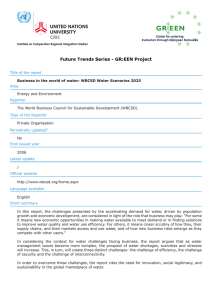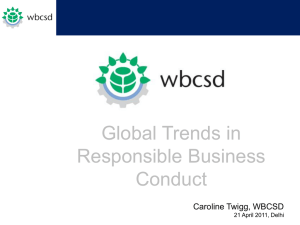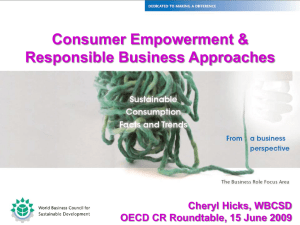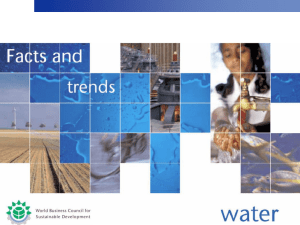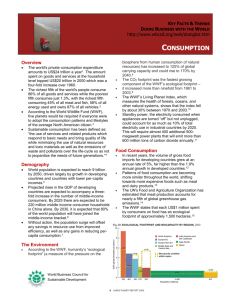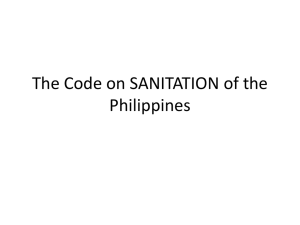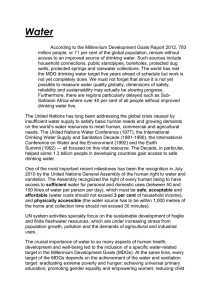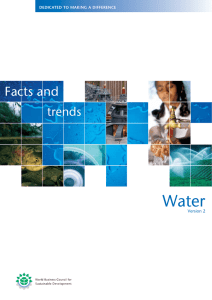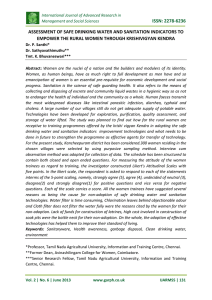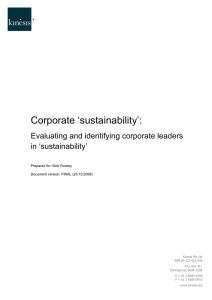Future Trends Series - GR:EEN Project
advertisement
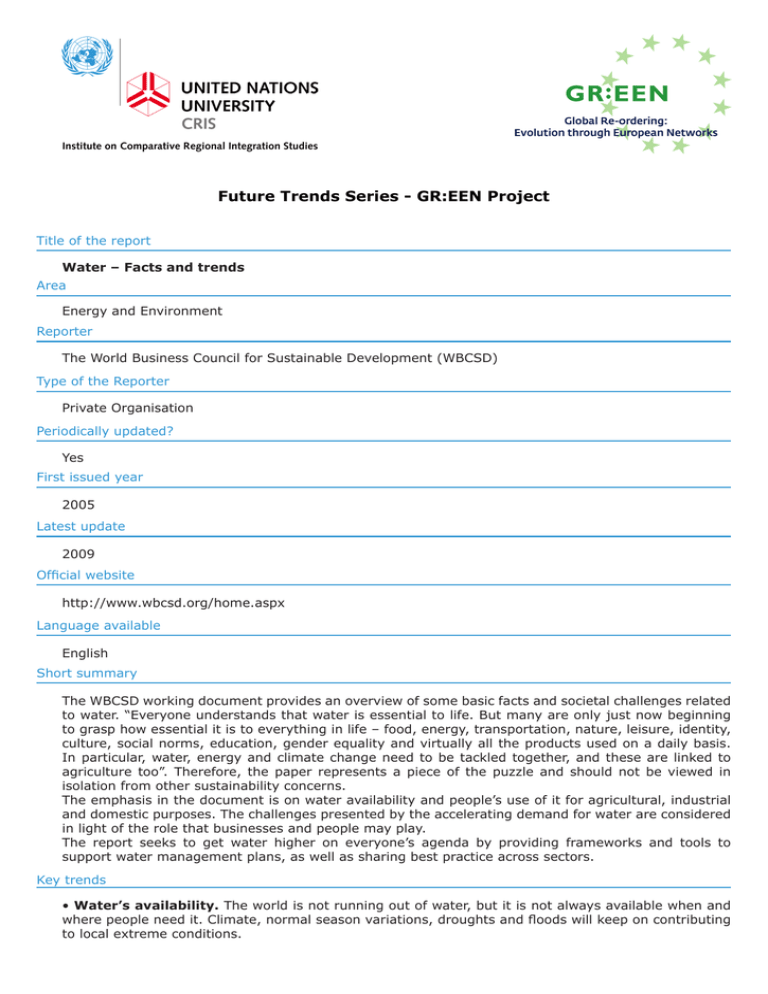
Future Trends Series - GR:EEN Project Title of the report Water – Facts and trends Area Energy and Environment Reporter The World Business Council for Sustainable Development (WBCSD) Type of the Reporter Private Organisation Periodically updated? Yes First issued year 2005 Latest update 2009 Official website http://www.wbcsd.org/home.aspx Language available English Short summary The WBCSD working document provides an overview of some basic facts and societal challenges related to water. “Everyone understands that water is essential to life. But many are only just now beginning to grasp how essential it is to everything in life – food, energy, transportation, nature, leisure, identity, culture, social norms, education, gender equality and virtually all the products used on a daily basis. In particular, water, energy and climate change need to be tackled together, and these are linked to agriculture too”. Therefore, the paper represents a piece of the puzzle and should not be viewed in isolation from other sustainability concerns. The emphasis in the document is on water availability and people’s use of it for agricultural, industrial and domestic purposes. The challenges presented by the accelerating demand for water are considered in light of the role that businesses and people may play. The report seeks to get water higher on everyone’s agenda by providing frameworks and tools to support water management plans, as well as sharing best practice across sectors. Key trends • Water’s availability. The world is not running out of water, but it is not always available when and where people need it. Climate, normal season variations, droughts and floods will keep on contributing to local extreme conditions. • Opportunities. The world is on track to meet the Millennium Development Goals’ (MDG) drinking water target: some African countries have been making rapid progress in drinking water coverage and other countries have quickly increased the proportion of their population with access to improved sanitation. “Current trends suggest that more than 90 per cent of the global population will use improved drinking water sources by 2015.” • Challenges. There are six trends that will affect freshwater use and that are increasing pressure to better manage water: population growth (projected to reach over 9 billion by 2050), increasing affluence (due to the fact that the rate of poverty alleviation is increasing), expansion of business activities (that require increased water services including both supply and sanitation), rapid urbanisation (which requires significant investment in water infrastructure), climate change (which poses a series of risks to water availability and water management systems) and aging drinking and wastewater infrastructure (leading to huge costs and environmental risks). Suggestions What can industry do to alleviate water stress? • Enter into creative partnerships “with municipalities (where business operates to develop cost-effective water supply and sanitation options), non-governmental groups (to encourage water conservation and improved water management systems) and the scientific community (to improve understanding of water resources and their management and to develop technologies to get the most value out of the water cycle)”. • Put its own house in order “by measuring and monitoring water use, continuing to reduce water consumption (by recycling and reusing water, lowering toxic and other contaminants in all operations involving water, changing production processes to be more water efficient), encouraging suppliers and purchasers up and down the supply chain to adopt best management practices and innovating (searching for new, more efficient water treatment technologies)”. Economic suggestions • The sources of money to meet the capital and operational costs are essentially tariffs, transfers and taxes – the “3Ts” – or a combination of these. Indeed, strategic financial planning that blends the “3Ts” would provide “an important tool for agreeing on water and sanitation-related investment targets, and how they will be achieved”. Financing needs can be reduced by improving the efficiency of water utilities, for example by reducing leakages that can represent 10-70 per cent of water production. Methodology Research from primary and secondary sources, and modelling Reference to other trends reports? If yes, which reports? - WBCSD, Business in the World of Water: WBCSD Water Scenarios to 2025, 2006
